How To Hit A Bunker Shot: Top Coaches Reveal Their Proven Techniques
Learn how to hit a bunker shot successfully with expert tips from two top coaches, Anders Mankert and Alex Elliott, helping you to spruce up your short game
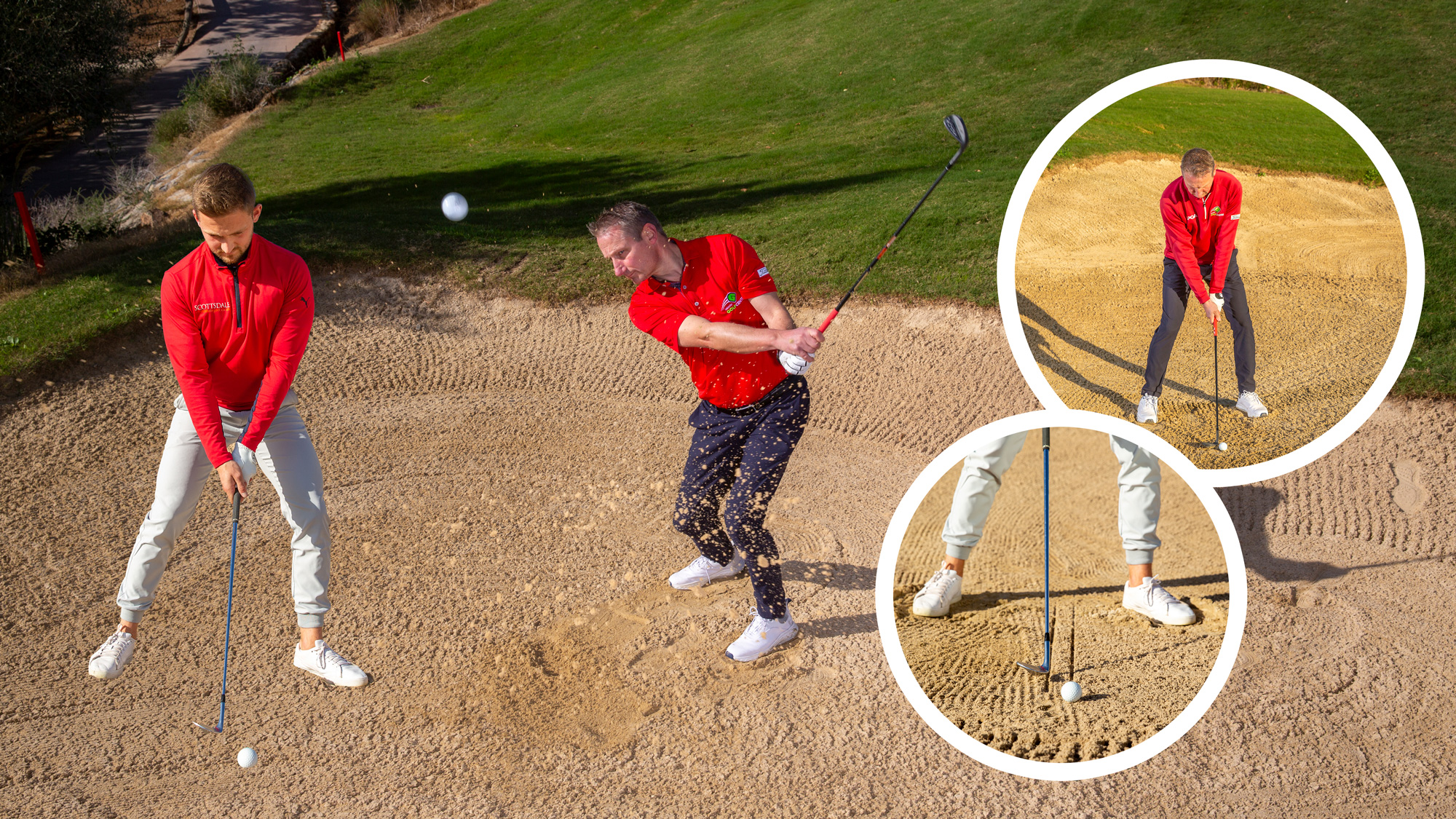

Understanding how to hit a bunker shot is one of the key pillars of knowledge in golf, with the ability to take your game and your scoring to the next level if you can also master the skill.
It's pretty common for amateur golfers to fear bunker shots, but with the right guidance it can be as simple as hitting pitch shots or learning how to chip around the greens.
In this article, Golf Monthly Top 50 Coaches Anders Mankert and Alex Elliott share their tips and drills as part of our ultimate guide for how to hit a bunker shot...
HOW TO HIT A BUNKER SHOT

Anders is the owner and head professional at Leicester Golf Centre, with a coaching career spanning more than 28 years. In 2024, Anders received the title of Master PGA Professional - becoming only the 65th person in history to be awarded that accolade. His vast coaching experience has transformed the golf swing of many amateurs and professionals.
SET-UP
In this section I am going to focus on a standard greenside bunker shot. My ball position is forward, my weight is leaning into the lead side, and my clubface is open (more on this below).
It's easier to lay the face flat and then take your normal golf grip. What you don't want to do is hold the club normally and then open the face, as it will return closed again.
Note how I've also dug my feet into the sand a little. As well as helping to give me a wide and stable base from which to work, I do this to lower the plane of the swing arc into the sand.
You can also see from the white zip on my top that my sternum is just behind the golf ball, which is perfect. From here, I'm confident that I can execute a decent bunker shot.
Get the Golf Monthly Newsletter
Subscribe to the Golf Monthly newsletter to stay up to date with all the latest tour news, equipment news, reviews, head-to-heads and buyer’s guides from our team of experienced experts.

The perfect set-up position for a standard greenside bunker shot
OPENING THE FACE
For a greenside bunker shot, we lower the hands at set-up. The lower the hands are set, the more early wrist break you can get (more on the importance of this below).
When you start to lower the hands, however, the clubface starts to aim left. So, we need to open the face, otherwise you're going to hit the ball left of target.

If you don't open the face you're likely to hit the ball left
WRIST COCK
This next picture shows how I stay centered - there's no shifting of weight onto my right side. I'm winding up with a big, full backswing, and my wrist cock is going to be full. If you measured my wrist break in the picture below, it's well over 90 degrees.
So, I’m going to hit this shot hard, and all I’m going to achieve good height with wrist break. Note the full, wide backswing and my left arm is fairly straight. This is a great position to be in.
Is this cocking of the wrists something club golfers should be thinking about when they play the shot? For better players, it happens naturally. For beginners and high handicap golfers, maybe not so much.
You won't get the desired strike if you haven't cocked your wrists. Don't worry, there are some bunker drills below to help with this.

Note the wrist cock in the backswing, a key fundamental with greenside bunker shots
If you drew a line down from my left arm in the picture below, you'd be able to see how the clubhead has travelled about 30 degrees past it. This is another great picture - everything is spot on.

The clubhead has worked underneath the ball
I like to show people this image as it shows how the right hand works for a greenside bunker shot - it works underneath whilst the cupping of the left wrist is at maximum. This gets the bounce of the club into the sand first and lifts the ball up.

This picture shows how the right hand works during a greenside bunker shot
Aim is really important in golf, and especially in bunkers. Note how my feet, hips and shoulders are aiming left. If they didn't - remember, my face is open - I'd miss right. The divot and splash of sand is going left, the same way as my body is, but the ball is clearly heading towards my target. I think of the greenside bunker shot as a kind of deliberate slice.
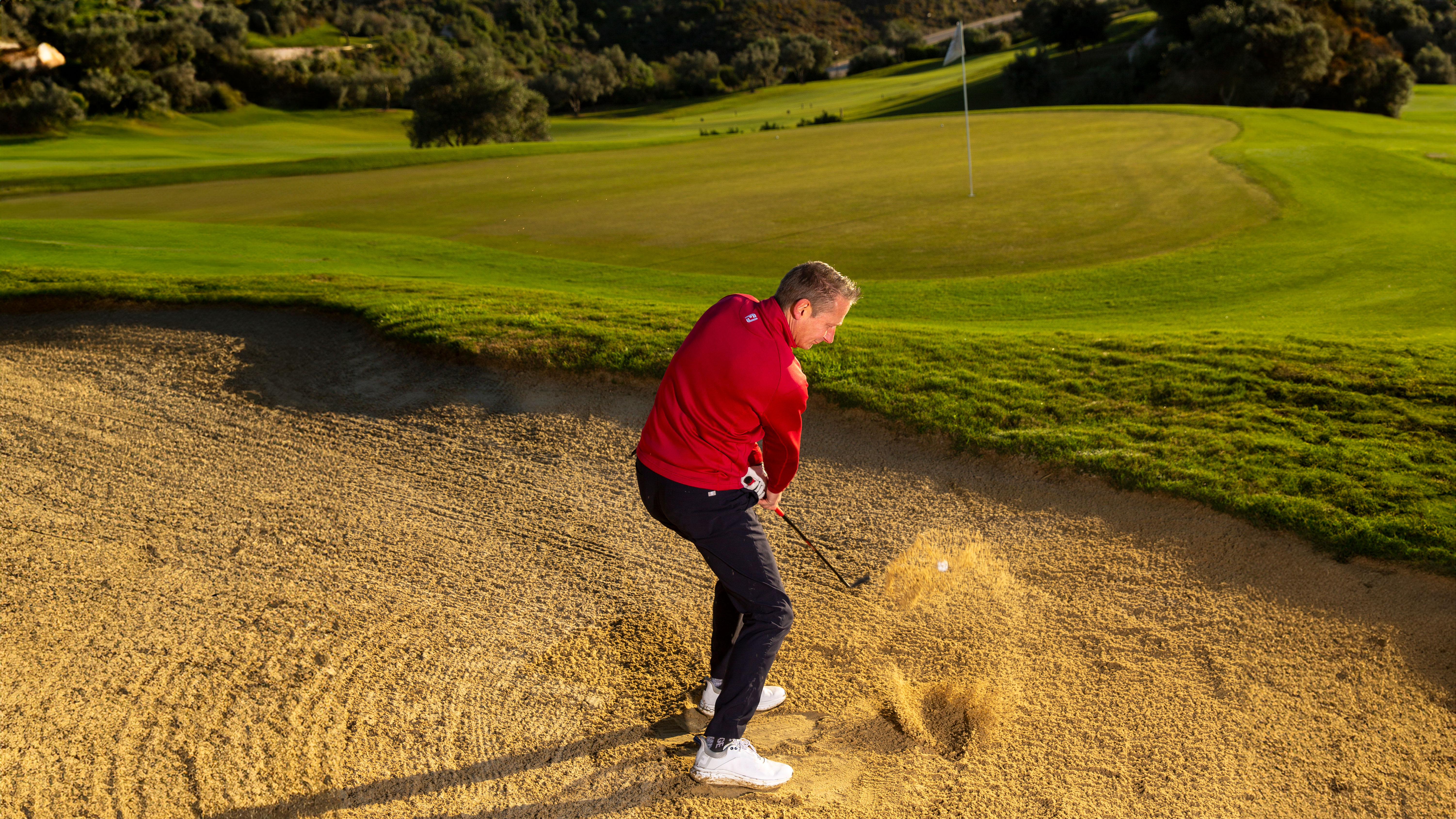
I've opened up my body but the ball is heading towards the target
FEEL DRILL
If I had to name my favorite bunker drill, this would be it. I was shown this when I was 17 years old playing with the Swedish squad. Hold the club with thumb and forefinger of both hands (as shown below). The club will feel very out of control when you take a backswing. However, it's a great exercise to appreciate how the bounce works and what it does for you.
The weight of the club just comes back down and the bounce passes the hands - it's incredible. Give it a go. You'll really come to appreciate just how easy a bunker shot is when you only use the weight of the clubhead.
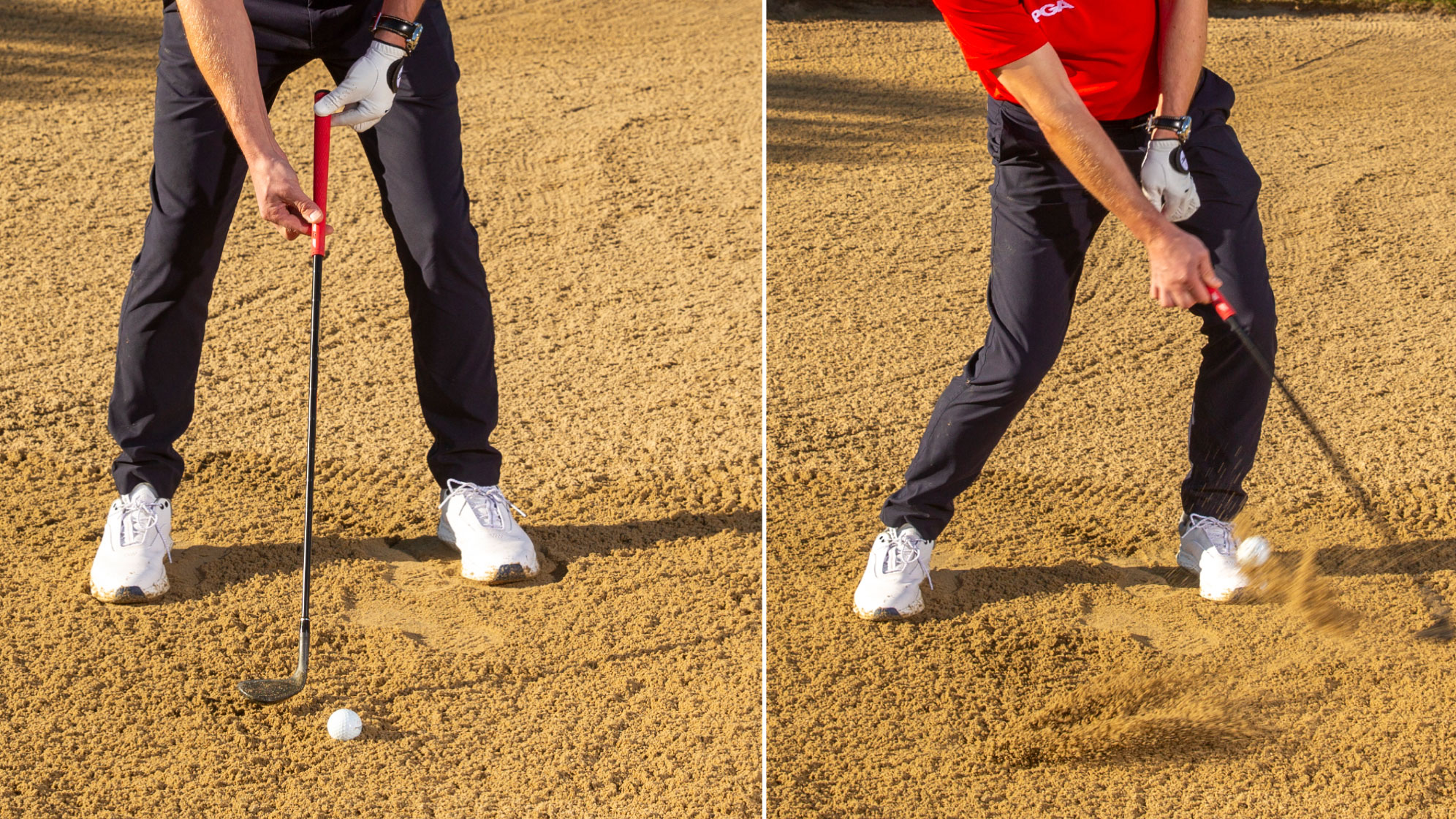
This bunker drill is one of my favorites
Strike Drills For Bunker Shots

Alex spent a great deal of time learning the game from fellow northwest of England golfer, Andrew Murray, who was a European Tour regular from 1979 to 1995. He spent three years on the European Tour (now DP World Tour) caddying for Andrew’s son, Tom, before taking his PGA qualifications. Alex has a thriving social media platform on Instagram and YouTube, where he offers a whole host of tips and advice to help viewers shoot lower scores.
Line drill
This is one my favorite drills to practice strike. Draw two lines in the sand, one to represent the ball position and one to represent where the bounce of the wedge will make contact with the sand (see image above).
Place a ball on the front line, and place your club just behind the back line. Start at the opposite side of the line to the ball, and make some practice swings where you are aiming to hit the back line first, then the front line.
As you do these, move towards the ball, as by the time you reach it you will have developed a great feel for how the clubhead should interact with the sand. This will result in a better strike and more consistent results.
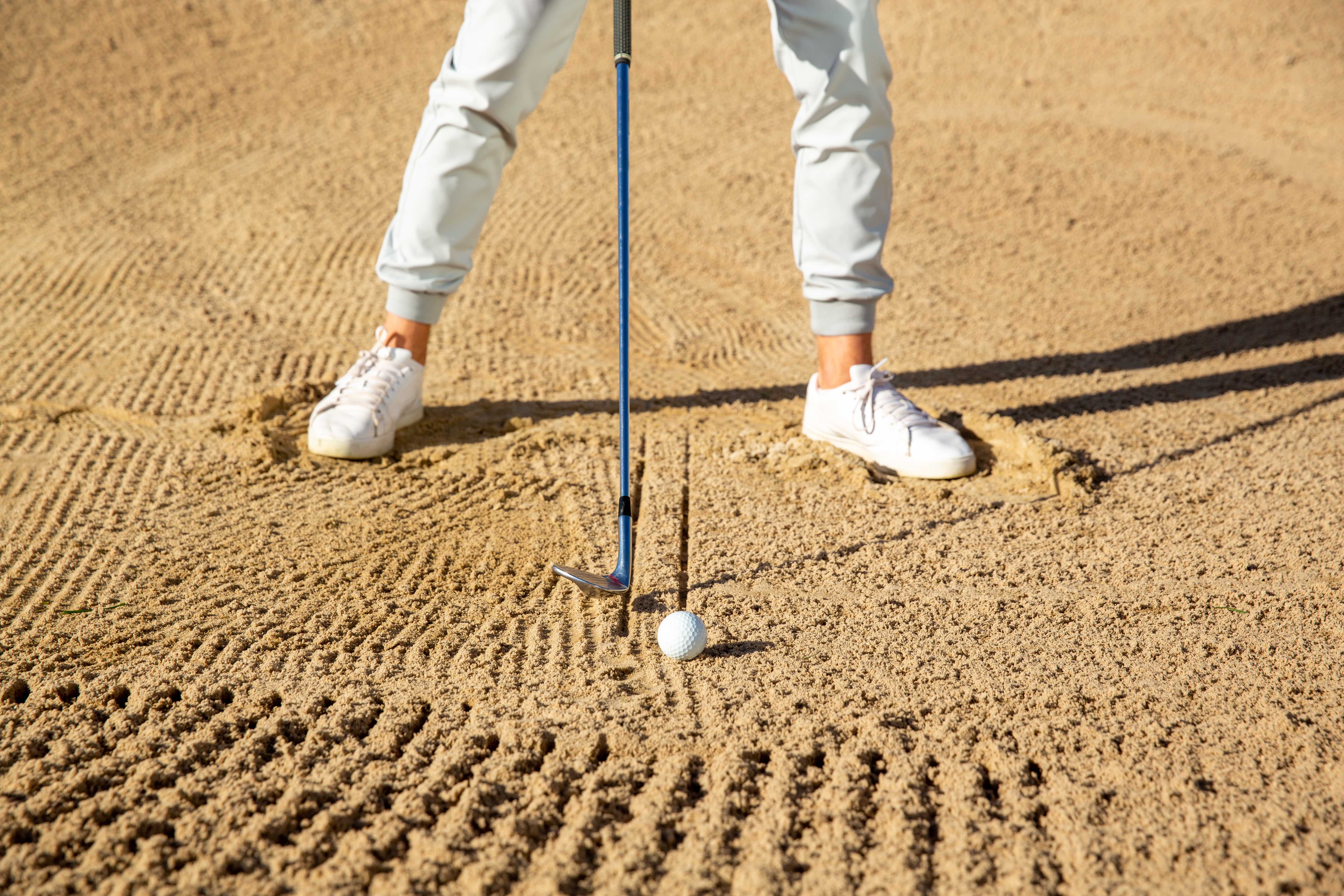
This simple greenside bunker drill will improve your strike
Strike the match drill
Draw on the sand an oversized matchbox (as shown below, and draw a line across the middle. The middle line is what you are looking to strike. This drill is about using the momentum of the clubhead in the swing to create the speed you need. I want you to start by swinging with just your left hand on the club.
Try to hit the line and check that the clubface is pointing back at you, half way into the finish position. Now do the same with just your right hand on the grip. You should get a feel for the weight of the clubhead, striking that match, at the bottom of the arc of the swing. Now place both hands on the club and replicate what you’ve just done.
Trust me - you'll feel like a sand-saving machine.
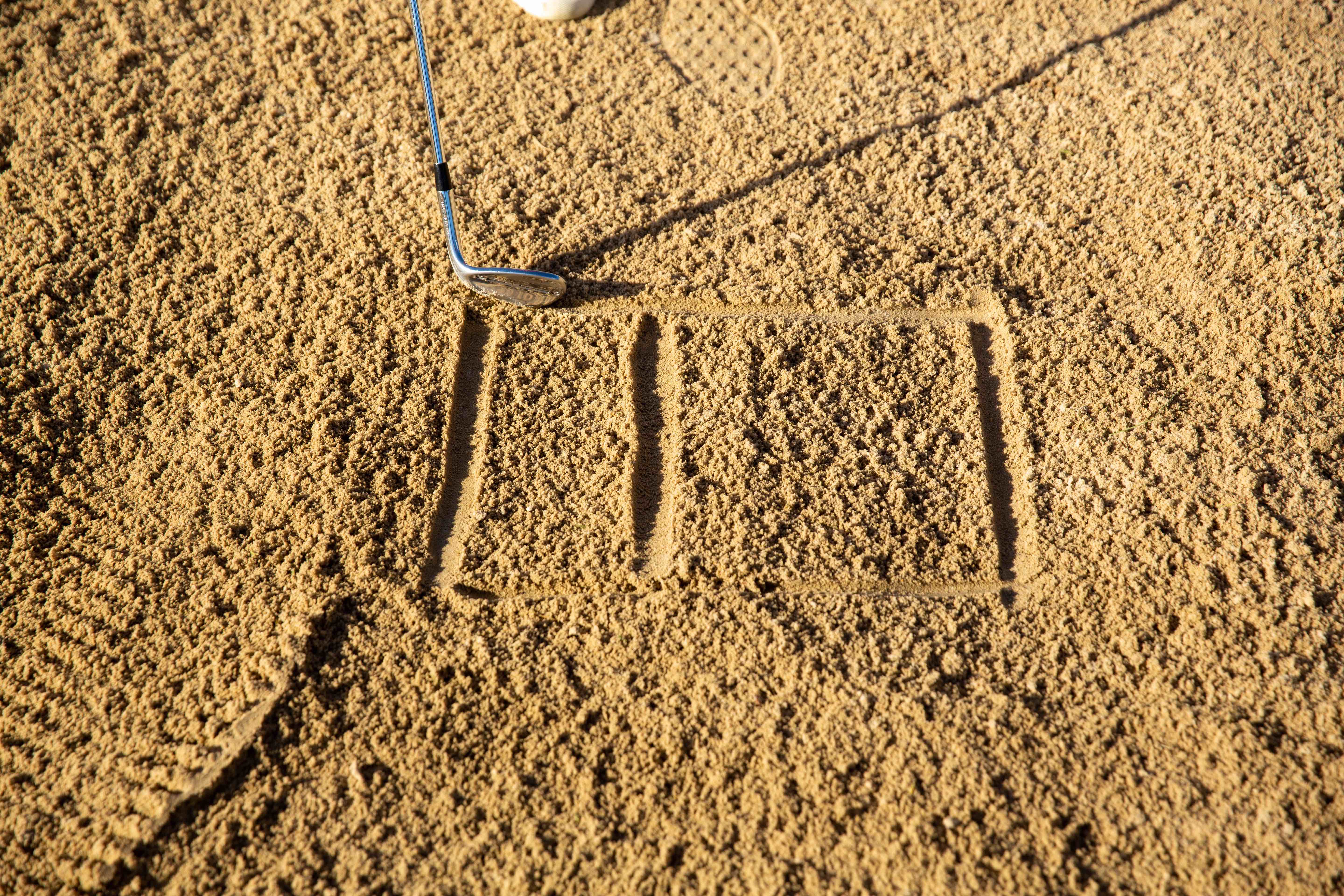
Create a large match box and draw a line across the center
Two-ball drill
This drill is quick, easy and effective. Place the first ball on the sand - give yourself a good lie. Now use a second ball to create an indentation in the sand, just behind the first. The aim here is simple - get the club striking the sand at the start of the indentation mark. Crucially, lock your focus in on the start of that indentation - that’s what you should be looking at, not the ball!
Should you pick a spot in the sand where you want to impact?
Yes. Frequently, it will benefit golfers to look at the low point of the shot. The ball is just a point on the journey of the swing. Depending on how much sand there is, you could be looking at three inches behind the ball, because that is your impact. You don’t 'hit' the ball in a bunker shot - you take out a bed of sand.
Why am I catching bunker shots fat and thin?
Both are common. The fault is usually where golfers lean backwards in an effort to try and lift the ball out. The low point then becomes really far back. The club is designed to bounce, so it either digs in and leads to a fat, or it bounces and you thin it. Remember, the entry point in the sand is not the low point - the low point is happening beneath the ball.
How do I escape a plugged lie?
For most recreational golfers, the safer option for a plugged lie is to keep the clubface square to slightly closed, with more weight on your left side at address, which will generate some shaft lean.
More accomplished bunker players might want to take a little more risk. Open the clubface to get the heel interacting with the sand more. Place more weight on your left-hand (lead) side and set your hands lower to generate a steeper backswing and lots of speed.

Michael has been with Golf Monthly since 2008. A multimedia journalist, he has also worked for The Football Association, where he created content to support the England football team, The FA Cup, London 2012, and FA Women's Super League. As content editor at Foremost Golf, Michael worked closely with golf's biggest equipment manufacturers and has developed an in-depth knowledge of this side of the industry. He's a regular contributor, covering instruction, equipment, travel and feature content. Michael has interviewed many of the game's biggest stars, including seven World No.1s, and has attended and reported on numerous Major Championships and Ryder Cups around the world. He's a member of Formby Golf Club in Merseyside, UK.
- Anders MankertMaster PGA Professional and Golf Monthly Top 50 Coach
- Alex ElliottTop 50 Coach
You must confirm your public display name before commenting
Please logout and then login again, you will then be prompted to enter your display name.
-
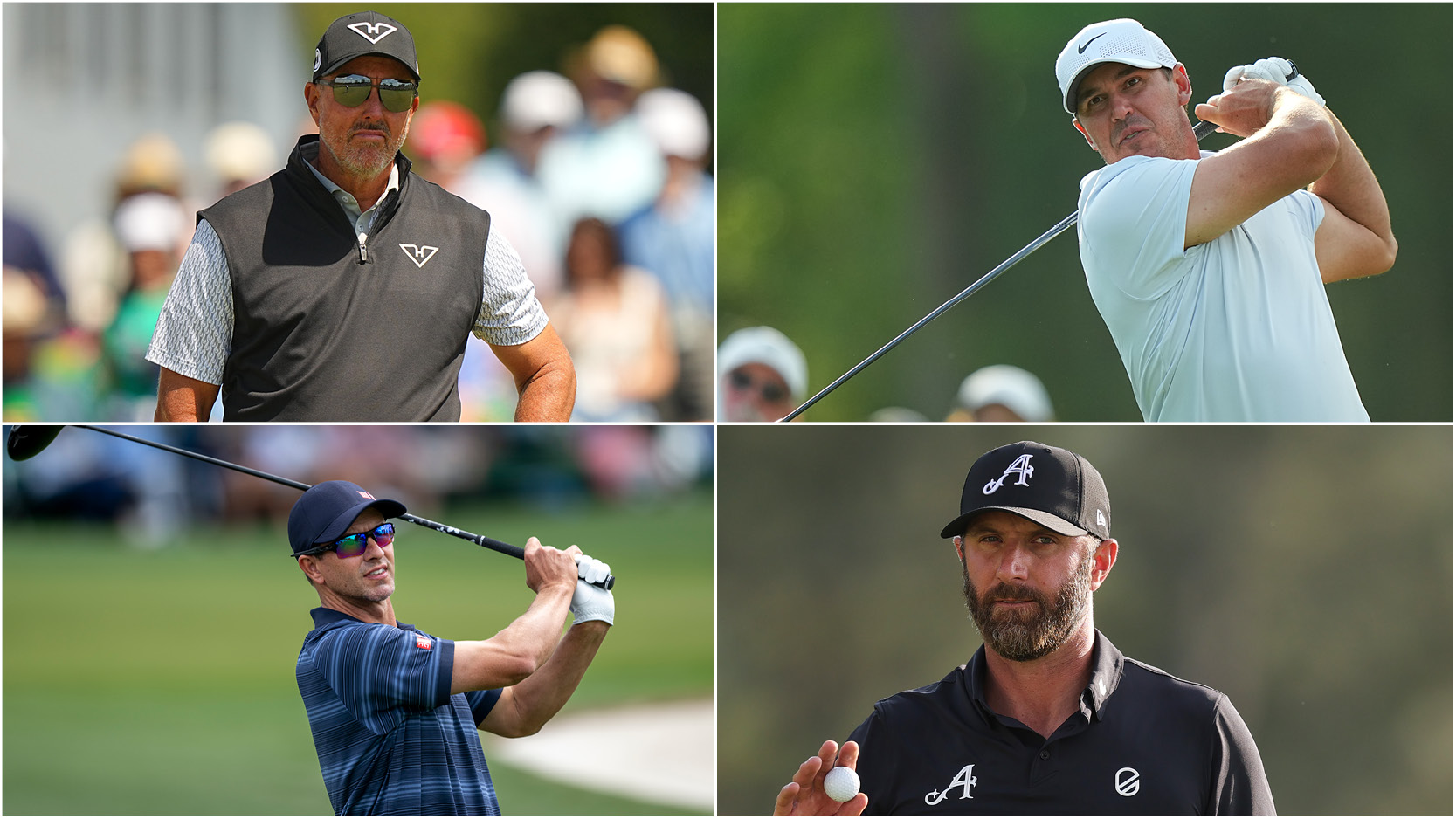 14 Big Names Who Missed The Cut At The Masters
14 Big Names Who Missed The Cut At The MastersAn exciting prospect is in-store over the weekend at The Masters, where a number of players missed the cut at Augusta National
By Matt Cradock Published
-
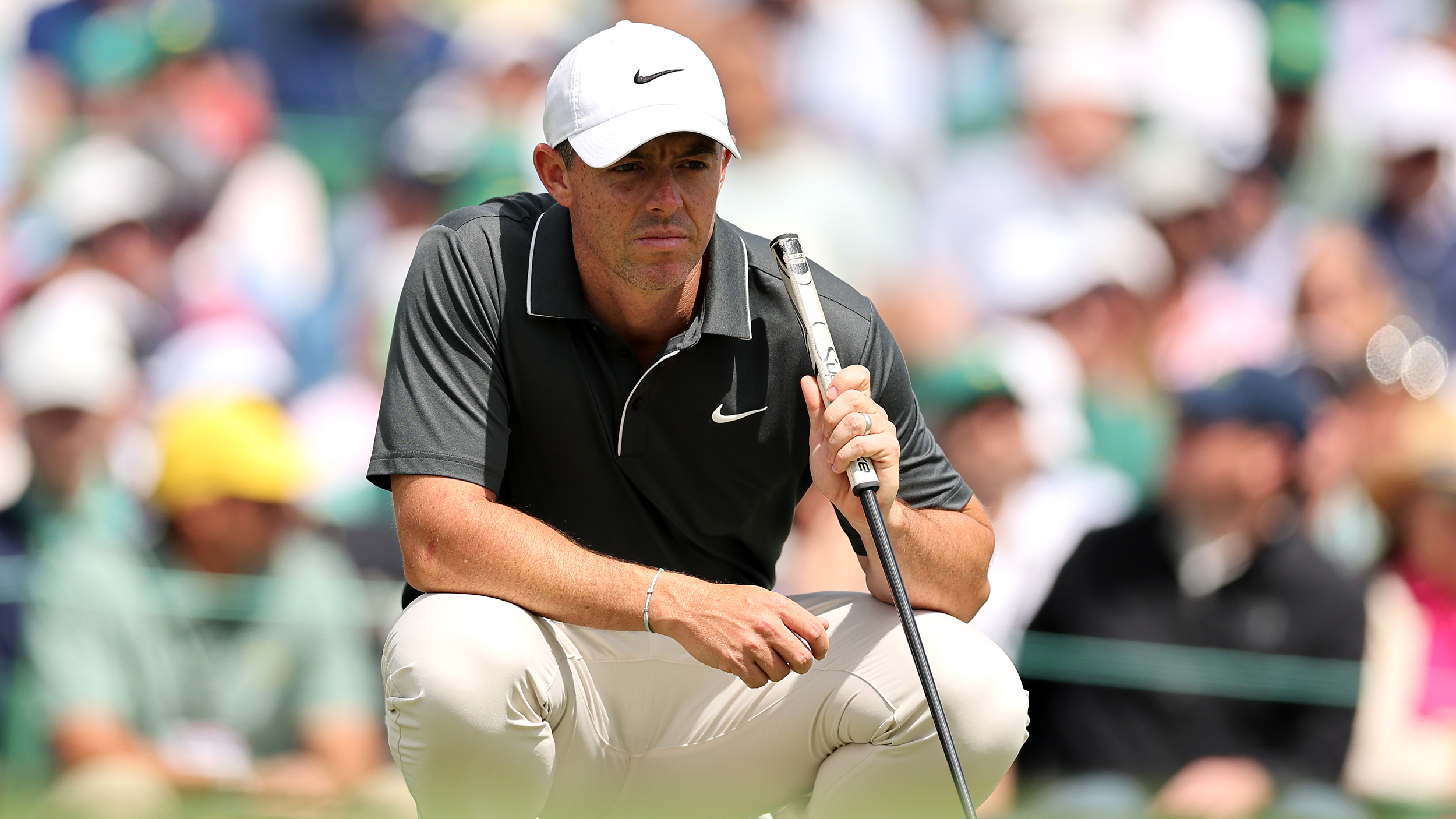 Why Rory McIlroy Is The Man To Beat At The Masters
Why Rory McIlroy Is The Man To Beat At The MastersWe look at three reasons why Rory McIlroy is in the driver's seat for the Green Jacket this weekend
By Elliott Heath Published